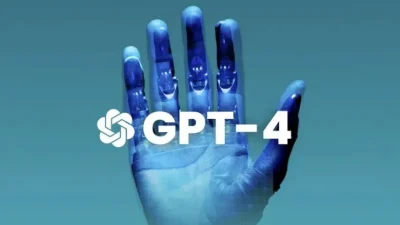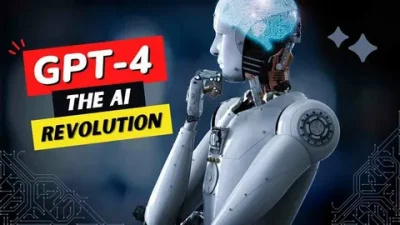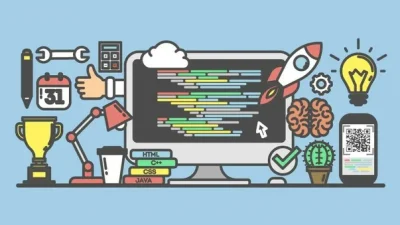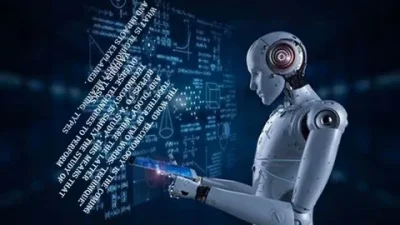Artificial intelligence has become an integral part of modern technology, and among its many advancements, GPT-4 stands out as a groundbreaking tool for natural language processing (NLP). In this guide, we will explore what GPT-4 is, how it operates, and what makes it different from earlier versions. Whether you’re a tech enthusiast or just curious about AI, this article will provide a clear and detailed explanation of GPT-4.
Understanding GPT-4
GPT-4, or Generative Pre-trained Transformer 4, is an advanced language model developed by OpenAI. It is designed to generate human-like text by predicting the next word in a sentence based on the context provided. This model has been trained on vast amounts of text data, enabling it to perform a variety of language-related tasks, such as text generation, summarization, translation, and more.
Key Features of GPT-4:
- Large-scale Model. GPT-4 is built on a transformer architecture, making it capable of processing vast amounts of text.
- Context Awareness: It can understand and retain context over long conversations or texts.
- Multimodal Abilities. Unlike its predecessors, GPT-4 can process not only text but also images in certain configurations.
- Improved Fine-tuning. GPT-4 can be customized for specific tasks with fine-tuning, improving its performance in niche areas.
How Does GPT-4 Work?
To understand how GPT-4 works, it’s essential to break down its architecture and the concepts behind its functionality.
Transformer Architecture
GPT-4 relies on a type of neural network called the transformer. This architecture uses mechanisms such as self-attention and feedforward layers to process text input effectively. Here’s how it works step by step:
- Tokenization. Input text is broken down into smaller units called tokens. For instance, “Artificial Intelligence” might be split into “Artificial” and “Intelligence.”
- Embedding. Each token is converted into a numerical representation using an embedding layer.
- Attention Mechanism. The self-attention mechanism assigns importance to each token based on its relevance to the others in the sequence.
- Feedforward Layers. These layers process the weighted tokens to generate the next word in the sequence.
Key Components of Transformer Architecture
| Component | Function |
|---|---|
| Tokenization | Splits text into smaller pieces (tokens). |
| Embedding | Converts tokens into numerical vectors. |
| Self-Attention | Determines relationships between tokens. |
| Feedforward Layers | Processes weighted tokens for output. |
Training Process
GPT-4 undergoes two primary stages of training:
- Pre-training. The model learns to predict the next token in a sequence using a massive dataset from books, articles, websites, and more. This phase builds the foundation for general language understanding.
- Fine-tuning. In this phase, the model is adjusted using specific datasets to enhance its performance on targeted tasks. Fine-tuning ensures the model aligns with human expectations and specific use cases.
Key Concepts in GPT-4
To understand GPT-4 better, let’s dive into some essential terms and concepts:
Tokens
Tokens are the building blocks of GPT-4’s processing. A token can be a word, part of a word, or even a character, depending on the language. For example, the sentence “GPT-4 is amazing!” could be split into tokens like “GPT,” “-4,” “is,” and “amazing.”
Context
Context refers to the surrounding information in a conversation or text that helps GPT-4 generate accurate responses. For instance, if you ask, “What’s the weather?” followed by “Will it rain?” GPT-4 uses the context of the first question to answer the second.
Generation
Text generation is GPT-4’s ability to create coherent and contextually relevant sentences. By predicting the next token based on the input, it can produce anything from a simple reply to a detailed essay.
Examples of Key GPT-4 Concepts
| Concept | Description | Example |
| Tokens | Basic units of text processing. | “GPT” “-4” “is” “amazing” |
| Context | Surrounding information aiding understanding. | “Will it rain?” refers to earlier weather question. |
| Generation | Creation of coherent and relevant text output. | “GPT-4 can write stories and code.” |
Differences Between GPT-4 and Previous Versions
GPT-4 introduces several improvements over its predecessors, such as GPT-3:
- Better Context Understanding. GPT-4 can handle longer and more complex inputs without losing coherence.
- Enhanced Multimodal Capabilities. While GPT-3 focuses solely on text, GPT-4 can integrate image inputs in some setups.
- Higher Accuracy. GPT-4 generates more precise and contextually appropriate responses.
- Scalability. The architecture of GPT-4 allows for better customization and scaling for specific industries.
Real-world Applications of GPT-4
GPT-4’s versatility makes it valuable across various fields:
- Customer Support: Automating responses in chatbots.
- Content Creation. Writing blogs, articles, and social media posts.
- Education. Assisting with tutoring, essay writing, and question-answering.
- Programming. Generating code snippets and debugging.
- Healthcare. Summarizing patient records and providing medical insights.
How to Use GPT-4 as a Beginner
Using GPT-4 is straightforward, thanks to user-friendly platforms:
- Select a Platform. Choose a GPT-4-powered application like ChatGPT or integrate it into your own software via an API.
- Provide Input. Enter text or a question. For example, “Write a poem about nature.”
- Review Output. Read and refine the generated text as needed.
Tips for Effective Use
- Be Specific. Provide clear and concise instructions.
- Use Iteration. Refine your input if the output is not as expected.
- Experiment. Explore different prompts to understand GPT-4’s capabilities better.
Conclusion
GPT-4 represents a significant leap in natural language processing, offering advanced capabilities for generating text and understanding context. By grasping its foundational concepts and exploring its potential applications, even beginners can harness the power of this transformative AI technology.






